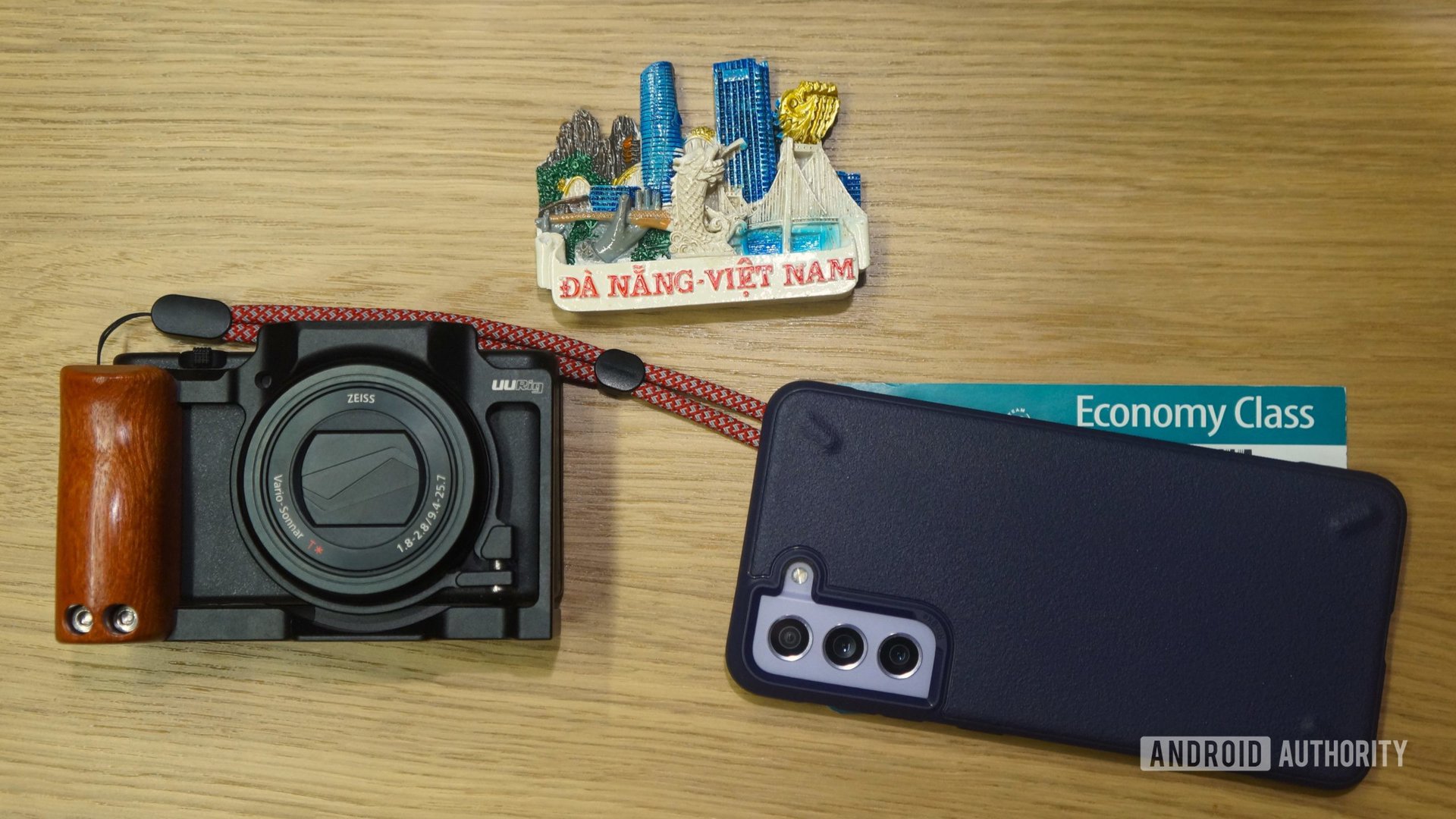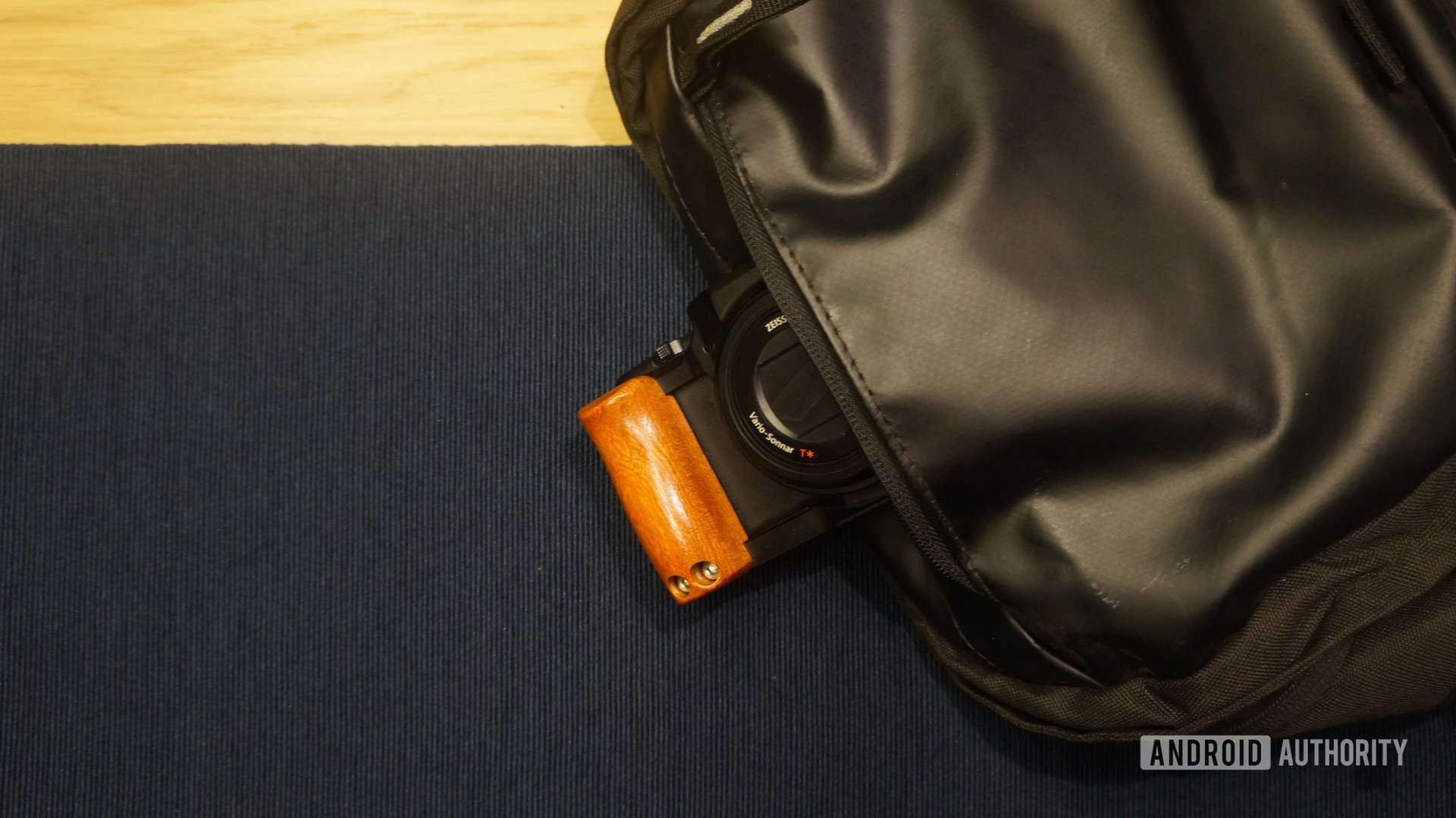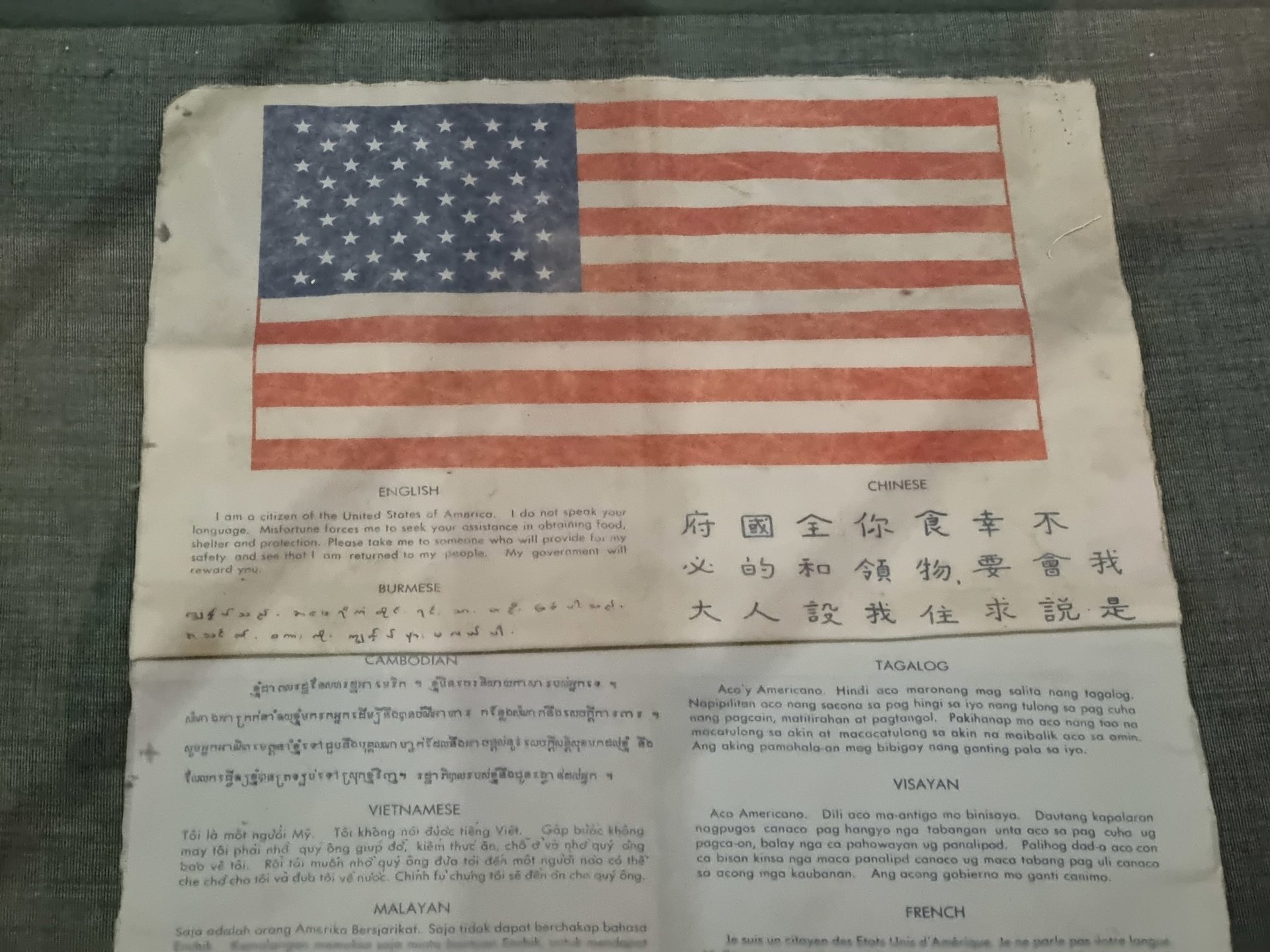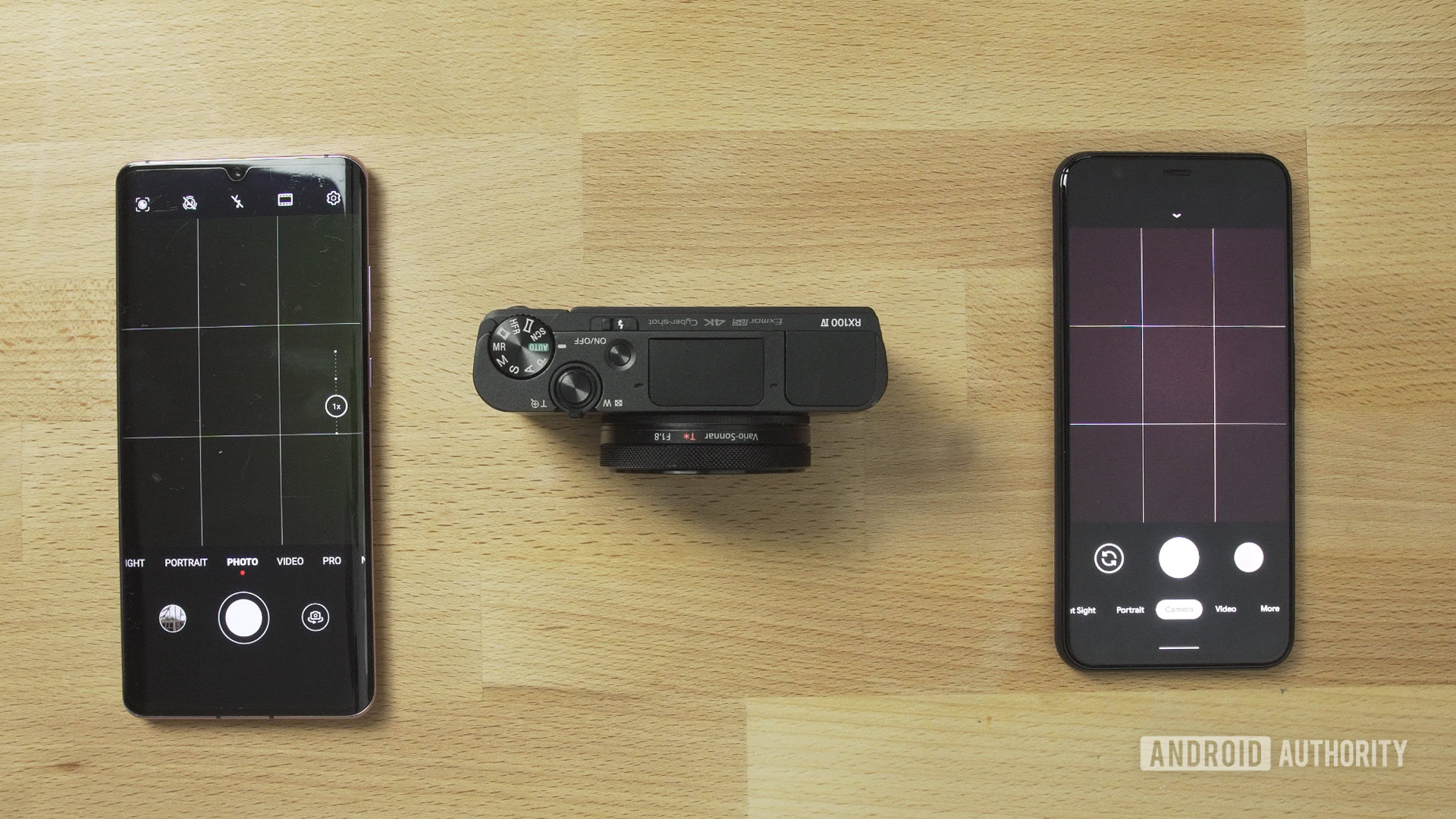Affiliate links on Android Authority may earn us a commission. Learn more.
I took Sony’s best pocket camera on vacation and regretted it
Published onJanuary 21, 2023

From Sony to Xiaomi, smartphone brands are increasingly dabbling in one-inch camera sensor hardware. But as someone that doesn’t buy flagship smartphones, I had resigned to accept that it would be years before the technology would trickle down to my pocket. That is until I realized I could skip the wait and buy a more capable point-and-shoot camera instead. The Sony ZV-1, for instance, uses the same one-inch sensor as the cutting-edge $1,799 Xperia Pro-I and costs less than half as much.
If you look at Sony’s marketing for the ZV-1, it’s clearly aimed at aspiring content creators and videographers. But it’s equally capable in non-video modes too. Sony packs the same one-inch sensor in the photography-focused RX100. In other words, even though it lacks some auxiliary features like an electronic viewfinder, pop-up flash, and mode dial, the ZV-1 still has the same capable imaging hardware.
In fact, the ZV-1’s 24-70mm f/1.8-2.8 lens arguably offers better low-light performance than the zoom-biased 24-200mm f/2.8-4.5 lens on the RX100 VII. The brighter aperture also means that the ZV-1 can produce stronger bokeh behind your subject.
Little did I know a point-and-shoot camera would be one of my most underwhelming tech purchases of 2022.
Ultimately, though, the tipping point for me was Sony’s asking price. At $749, the ZV-1 is a whopping $450 cheaper than the latest RX100 and over a grand less than the Xperia Pro-I. That factor was enough to convince me and before long, I had unboxed Sony’s best portable camera. But little did I know that it would end up being one of my most underwhelming tech purchases of 2022.
Portable doesn’t mean convenient

I spent the first few weeks with the Sony ZV-1 brushing up on the basics of manual photography. I learned how to quickly balance ISO, shutter speed, and aperture using the camera’s buttons and dials. It didn’t turn me into a skilled photographer but nailing these basics allowed me to capture better shots than the camera’s automatic modes.
Fast forward to a couple of months ago and I found myself planning an impromptu trip to Vietnam with my partner. This was my first real opportunity to use the Sony ZV-1, so naturally, I excitedly carried it along. Just days before leaving, though, I also traded in my LG Wing for a Samsung Galaxy S21 FE. The former had a famously mediocre camera system, so I was curious to see how well a 2022 sub-flagship smartphone would perform against Sony’s best.
Within the first day of landing in Hanoi and checking out the local sights, we were inundated with sightseeing recommendations. Almost every traveler we met sang praises of the Hà Giang province in northern Vietnam, so we decided to rent a motorcycle and explore the area. But here’s where I ran into my first roadblock with the ZV-1 — we only had enough space in our backpack to fit three days’ worth of clothes and daily essentials. I wasn’t particularly keen on strapping an expensive camera to the back of a dirt bike either. So in the end, I had no choice but to leave the camera behind in our suitcase at the hotel.
Without water resistance and dust protection, taking the ZV-1 off the beaten track made little sense compared to using my phone.
But I quickly discovered that even if I had carried the camera somehow, using it would’ve been risky business. On the very first day, we rode through a foggy mountain pass and eventually ran into full-blown rain. The ZV-1 isn’t weather-sealed, so I wouldn’t have been able to photograph anything without risking the camera. I had no such worries about my IP68-rated smartphone, meanwhile, and used its cameras at every viewpoint. I even had it mounted on the bike’s handlebar for navigation the entire time.
By the end of that first day, the ZV-1 was little more than an afterthought in my mind. I had seen some of the most breathtaking views of my life and the S21 FE captured it all, often performing better than I expected. And with limited daylight hours, I also appreciated being able to press the shutter button and quickly get back on the road — zero fiddling with buttons or dials necessary.
I found myself reaching for the ultrawide lens quite often, which is something I wouldn’t have been able to do with the camera. The ZV-1’s 24mm minimum focal length is a decent starting point, but it lacks the grandeur that the FE’s 13mm wider field of view delivers for landscapes.
Now, I know what you’re probably thinking. Smartphones have obliterated the point-and-shoot camera market precisely because of their convenience and versatility. But the important bit here is that I never felt like the ZV-1 would’ve produced a dramatically better image. This meant I continued relying on my smartphone for most of the trip, even once I had access to the camera again. Just see the snaps from the Galaxy S21 FE below.
Smartphone vs point-and-shoot: Does the dedicated camera win?
When I was finally unencumbered by weight and weather restrictions, I took the ZV-1 to a theme park and pit it against the S21 FE. I fully expected the camera to come out ahead in a side-by-side comparison, but it was often hard to pick a winner.
Looking at the above samples, it’s clear that Samsung’s post-processing has the tendency to go a little overboard with saturation and sharpening, particularly in sections with dense foliage. However, the ZV-1’s dynamic range straight out of the camera can’t compete with the multi-frame HDR processing of modern smartphones. You can remedy some of these problems if you shoot in RAW with either device, but the last thing I want to do while on vacation is to lug around my laptop and edit photos.
The ZV-1 has the potential to deliver better shots, but who wants to edit photos on vacation?
Zoom was the one rare area where I always preferred having the ZV-1 on hand. But I expected that as the S21 FE only has a middling 3x telephoto sensor. I’d expect the periscope hardware you’d find on a Pixel 7 Pro or Galaxy S22 Ultra to fare much better. Nevertheless, I still found the smartphone zoom came in handy sometimes, like when I wanted to read the text on a museum exhibit from far away.

I’ll also admit that selfies taken with the ZV-1 almost always looked better than my smartphone’s tiny camera, and proper framing was possible thanks to the fully articulating screen. Likewise, videos look noticeably better with more detail, depth of field, and zero over-sharpening. The ZV-1’s vlogging heritage means that it even has Electronic Image Stabilization (EIS), a feature many cheaper Sony cameras have lacked for years.
Selfies and video captured on the Sony ZV-1 did look better than my smartphone.
But at the end of the day, none of these wins help justify the ZV-1’s $750 asking price. For context, I picked up my Galaxy S21 FE for just $500 on sale. It’s not the best camera phone on the market, but I’m more than satisfied with it. Looking back, I would’ve gladly sprung the extra $200 or so for a Pixel 7 if I had known how much I would use its cameras.
A point-and-shoot isn’t for everyone

My biggest disappointment with the ZV-1 is that even though it’s one of the smallest cameras on the market, it’s not very convenient. It doesn’t even always fit in your pocket. You can probably make it happen with an overcoat or cargo shorts, but I found it borderline impossible while wearing jeans — even without the grip accessory I use. That’s an immediate compromise since you’re forced to carry around a bag at all times. And by that point, why not get a slightly larger APS-C camera instead? The legendary Sony A6000, for example, is not only much more capable but also significantly cheaper.
The ZV-1 makes a few usability compromises too. There’s very little grip compared to larger cameras, for example, which means it sits rather precariously in your hand. I’ve since added a third-party grip, but it significantly inflates the camera’s size and weight. When you also consider the lack of water resistance, Sony’s clunky smartphone companion app, and the dated micro-USB charging port, you get the feeling that the extra hassle simply isn’t worth it.
Point-and-shoot cameras end up in an awkward position; not as portable as a phone or as powerful as an APS-C camera.
That’s not to say the Sony ZV-1 is a bad camera. I’m sure that someone with more skill and patience could extract more value from it than I did. But in a world where computational photography exists, you can obtain nearly the same results from a phone without breaking the bank. And if you manage to nail shot composition, you’ll achieve a great deal with even a modest smartphone camera.
Looking back now, I probably should’ve bought an action camera or drone instead of the Sony ZV-1. Either of those would’ve added a whole new dimension to how I look back at my trip. Or perhaps it’s better to simply not buy any dedicated photography gear and travel lighter. Either way, I now have a newfound appreciation for the cameras on modern smartphones.
